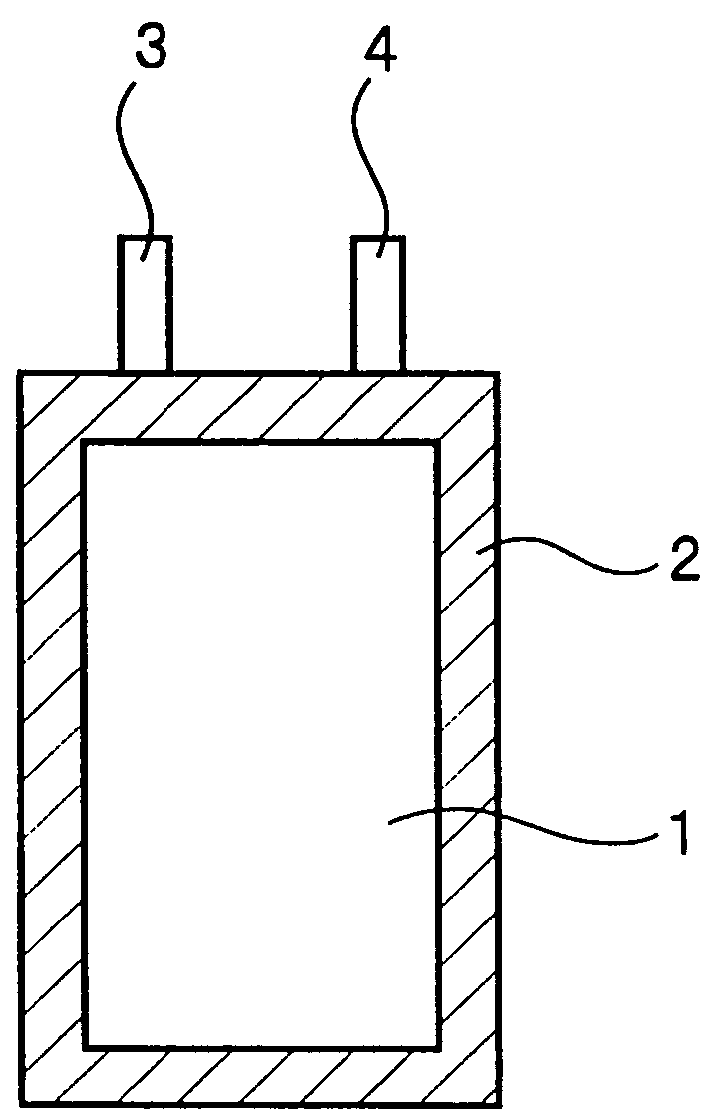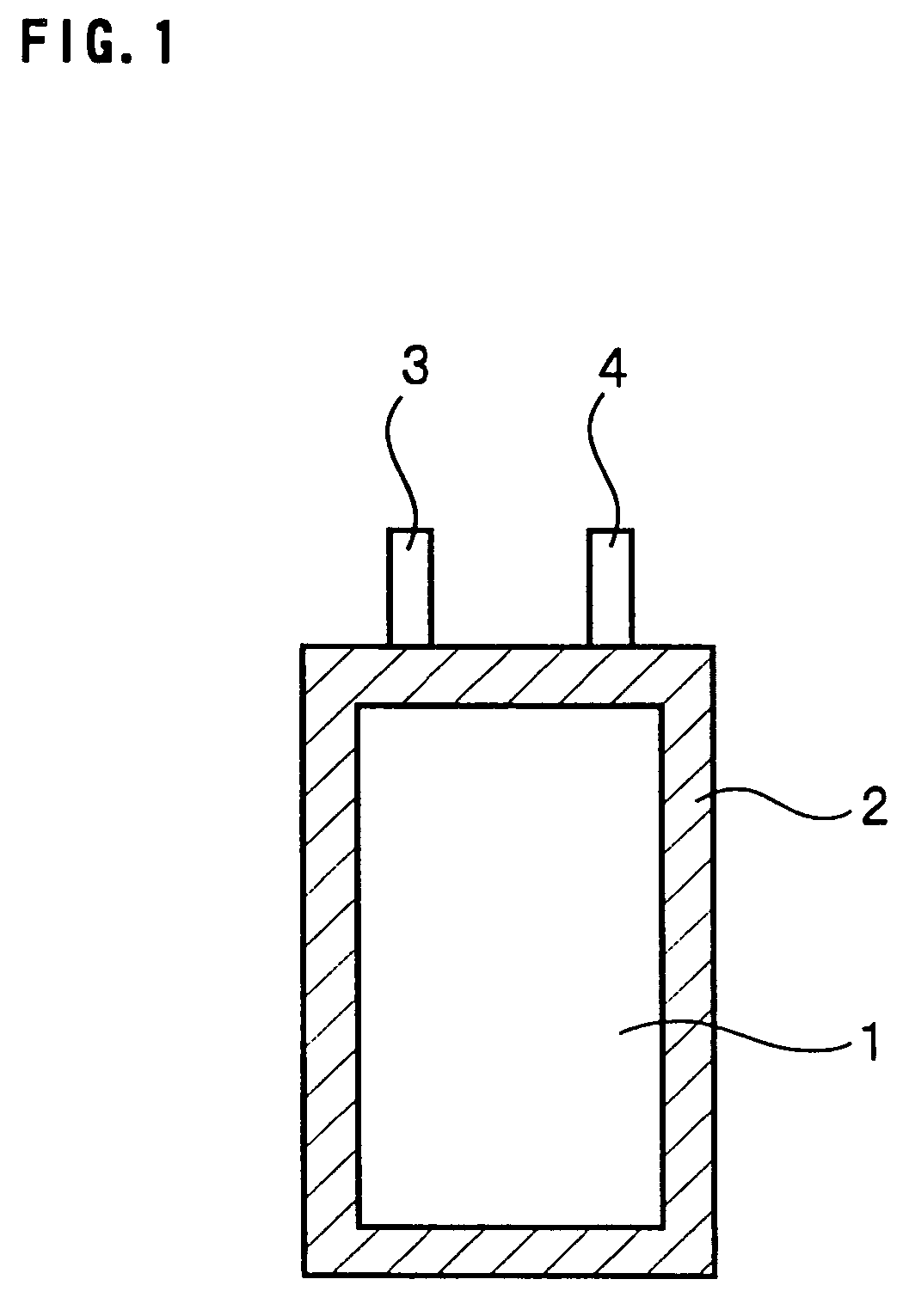Nonaqueous electrolyte secondary battery
a secondary battery and electrolyte technology, applied in the field of nonaqueous electrolyte secondary batteries, can solve the problems of significant swelling of batteries, significant capacity loss, and significant swelling of batteries when stored, and achieve the effect of suppressing gas evolution and improving high-temperature storage characteristics
- Summary
- Abstract
- Description
- Claims
- Application Information
AI Technical Summary
Benefits of technology
Problems solved by technology
Method used
Image
Examples
example 1
[0047](Preparation of Positive Active Material)
[0048]Li2CO3 and a coprecipitated hydroxide represented by Mn0.33Ni0.33CO0.34(OH)2 were mixed in an Ishikawa automated mortar such that a ratio in mole of Li to a group of the transition metals Mn, Ni and Co was brought to 1:1, heat treated in the ambient atmosphere at 950° C. for 20 hours and then pulverized to obtain a lithium transition metal complex oxide having a mean secondary particle diameter of about 5 μm and represented by LiMn0.33Ni0.33CO0.34O2.
[0049]The obtained lithium transition metal complex oxide was rinsed with running water for 24 hours and then heat dried to provide a positive active material. The resulting positive active material had a BET specific surface area of 1.2 m2 / g.
[0050](PH Value Measurement)
[0051]The obtained lithium transition metal complex oxide, weighing 5 g, was introduced in a 100 ml beaker to which 50 ml of purified water was subsequently added. The beaker contents were ultrasonically treated for 10 ...
example 2
[0061]The procedure of Example 1 was followed, except that the firing temperature in the preparation of the positive active material was changed to 850° C., to construct a nonaqueous secondary battery A2. The resulting active material had a BET specific surface area of 2.0 m2 / g and a pH value of 10.84.
example 3
[0062]The procedure of Example 1 was followed, except that LiOH was used as the Li source, the firing temperature was changed to 1,000° C. and the firing time was changed to 30 hours, to construct a nonaqueous secondary battery A3. The resulting active material had a BET specific surface area of 0.40 m2 / g and a pH value of 10.61.
PUM
| Property | Measurement | Unit |
|---|---|---|
| thickness | aaaaa | aaaaa |
| BET specific surface area | aaaaa | aaaaa |
| BET specific surface area | aaaaa | aaaaa |
Abstract
Description
Claims
Application Information
 Login to View More
Login to View More - R&D
- Intellectual Property
- Life Sciences
- Materials
- Tech Scout
- Unparalleled Data Quality
- Higher Quality Content
- 60% Fewer Hallucinations
Browse by: Latest US Patents, China's latest patents, Technical Efficacy Thesaurus, Application Domain, Technology Topic, Popular Technical Reports.
© 2025 PatSnap. All rights reserved.Legal|Privacy policy|Modern Slavery Act Transparency Statement|Sitemap|About US| Contact US: help@patsnap.com



